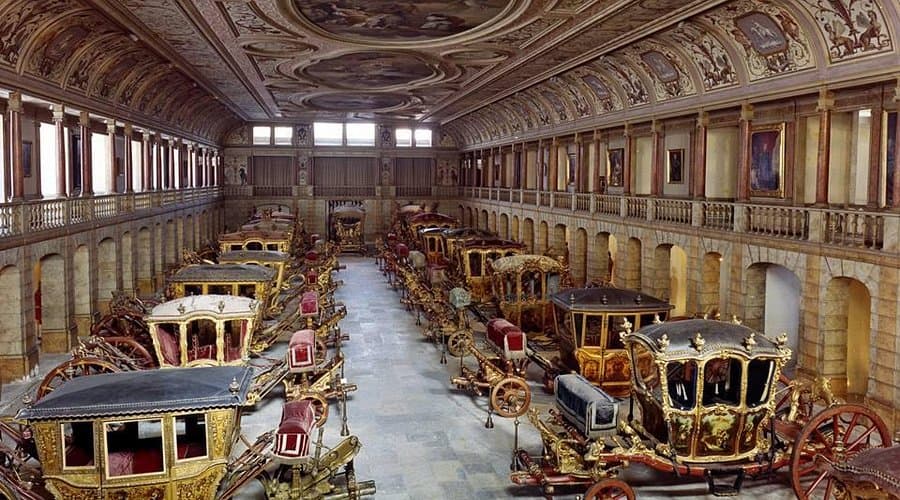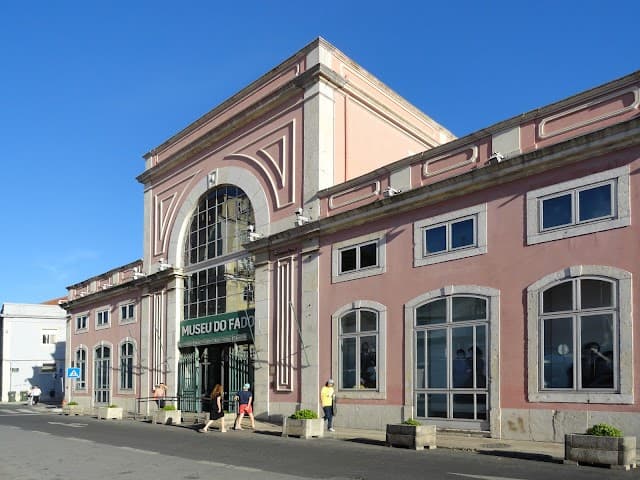.jpg&w=3840&q=100)
On the banks of the Tagus River, near the historic Belém Tower in Lisbon, lies a place that transports visitors to the heart of Portugal’s great maritime adventures : the Maritime Museum (“Museu da Marinha” in Portuguese). A true tribute to the Age of Discoveries, this museum chronicles the fascinating history of Portuguese navigators, from coastal sailing to the transoceanic expeditions that shaped the world. Slightly away from the bustling city centre, it is a must-visit for history enthusiasts, art lovers, adventure seekers, or simply the curious.
An immersion into Portuguese maritime history
The Maritime Museum is housed in the former Ajuda Palace, a 19th-century building. Its origin stems from the desire to preserve the memory of Portugal’s maritime achievements, a tradition that shaped the nation’s identity and power over the centuries.
Through its numerous galleries, the museum offers a complete immersion: ship models, ancient maps, navigational instruments, sailors’ uniforms, and objects linked to international expeditions. Each room tells a story of a particular era and style of navigation, from early coastal vessels to the famous caravels and naus used in explorations. The collections also illustrate the commercial and cultural relationships established by the Portuguese around the world.
Collections not to miss
The museum houses over 70,000 items, including some unique pieces.
Ship models : from small fishing boats to the majestic naus, wooden models accurately reproduce iconic vessels of past centuries.
Maps and navigational instruments : astrolabes, sextants, compasses, and globes help visitors understand the techniques used by Portuguese navigators to chart ocean routes.
Paintings and engravings : artworks depicting naval battles, ports, distant explorations, and life aboard ships.
Historical objects : uniforms, flags, medals, and trophies highlight the strategic and symbolic importance of the Portuguese navy.
Among the most emblematic pieces is a full-size model of a 15th-century caravel, offering a tangible glimpse into the life of sailors at the time. Similarly, world maps illustrate Portuguese expansion and its vital role in global cartography.
.jpg?2025-10-28T22%3A59%3A53.550Z)
An immersive experience for all ages
The museum goes beyond static exhibitions. Visitors can enjoy interactive experiences via informative panels, digital kiosks, and educational activities. Some sections are specifically designed for children, with fun workshops where they can build ship models or learn the basics of navigation.
The atmosphere is unique: the scent of wood from the models, the calm of the galleries, and the soft lighting create a contemplative and immersive environment. The museum provides a true journey through time and space, showcasing the history of Portuguese navigators with passion and clarity.
Practical information
Address : Praça do Império, 1400-206 Lisbon, Belém
Opening hours : Tuesday to Sunday, 10:00-18:00 (last admission at 17:30). Closed on Mondays, 1 January, Easter Sunday, 1 May, and 25 December.
Admission fees : general admission €6 ; youth (13-25 years) €3 ; seniors (+65 years) and people with disabilities €4.50 ; free for children up to 12 year.
Access by tram (line 15 from the city centre, Belém stop) ; bus (lines 714, 728, 729) ; bike or on foot from Belém Tower or Jerónimos Monastery
Facilities : shop, café, audio guides, guided tours, and workshops for school groups
Events not to miss
The Maritime Museum regularly hosts temporary exhibitions, conferences, and workshops on navigation, maritime exploration, and Portuguese history. Concerts and cultural events may also take place within the majestic palace and gardens of Belém (programme available on the museum’s official website).
To extend your visit in this historically rich neighbourhood, it is recommended to combine it with other landmarks in Belém: Jerónimos Monastery, Belém Tower, Belém Cultural Centre, and of course, to enjoy the famous pastel de nata at the renowned Pastéis de Belém, just a short walk away.
Why visit the museum ?
To discover and learn about Portuguese maritime history, the driving force behind the Age of Discoveries and European expansion.
To admire unique collections of ship models, maps, and historical artefacts.
For a rich and immersive cultural experience suitable for all ages.
To explore an iconic Lisbon neighbourhood, combining heritage, gastronomy, and leisure.
The Maritime Museum in Belém is far more than a museum: it is an invitation to sail the oceans of Portuguese history. Immerse yourself in the grandeur of expeditions, the ingenuity of navigators, and the beauty of collections that convey the soul of Portuguese sailors.
Share this article
Suggested articles

The Unusual Museums of Portugal
When we think of museums, we often imagine long silent halls, paintings we look at without daring to speak, and guards following us out of the corner of their eye. But in Portugal, museums have an entirely different flavour. Here, they sometimes smell of the sea, of polished wood, of aged leather… and even of grilled sardines ! From north to south, the country is full of quirky, playful, sometimes slightly eccentric museums that tell its story in their own way. Forget the clichés : make room for curiosity, creativity, a touch of fantasy, and above all, some really fun outing ideas !
.webp&w=3840&q=75)
The National Azulejo Museum in Lisbon
A true cultural treasure lies hidden in the peaceful neighbourhood of Xabregas in Lisbon: the National Azulejo Museum (Museu Nacional do Azulejo). Often overlooked by tourists, this museum, housed in the magnificent Madre de Deus Convent founded in 1509 by Queen D. Leonor, is well worth a visit.
.jpeg&w=3840&q=75)
Serralves in Porto, Contemporary Art in a Green Haven
Just a few minutes from Porto’s busiest avenues lies a true sanctuary of contemporary art and nature: the Serralves Foundation. Less visited than other urban landmarks in the city, this unique complex combines modern architecture, a romantic garden, and (very) daring exhibitions. If you are looking for a cultural experience in a green setting, this place is well worth your attention !
.jpg&w=3840&q=75)
The Calouste Gulbenkian Museum : Lisbon’s Hidden Masterpiece
In the heart of a quiet Lisbon district, away from the hustle and bustle of the city centre, lies a treasure often overlooked : the Calouste Gulbenkian Museum! A true gem for art lovers (and not only them), this place is often described as a “hidden masterpiece”, as its richness far exceeds its sober appearance and discreet location…

Fado Museum in Lisbon, Living Memory of a Music
In the heart of Lisbon’s historic Alfama district, the Fado Museum is a must-visit for anyone wanting to understand the musical soul of Portugal ! Opened on 25 September 1998, this museum is entirely dedicated to fado, the melancholic and passionate Portuguese music genre.


